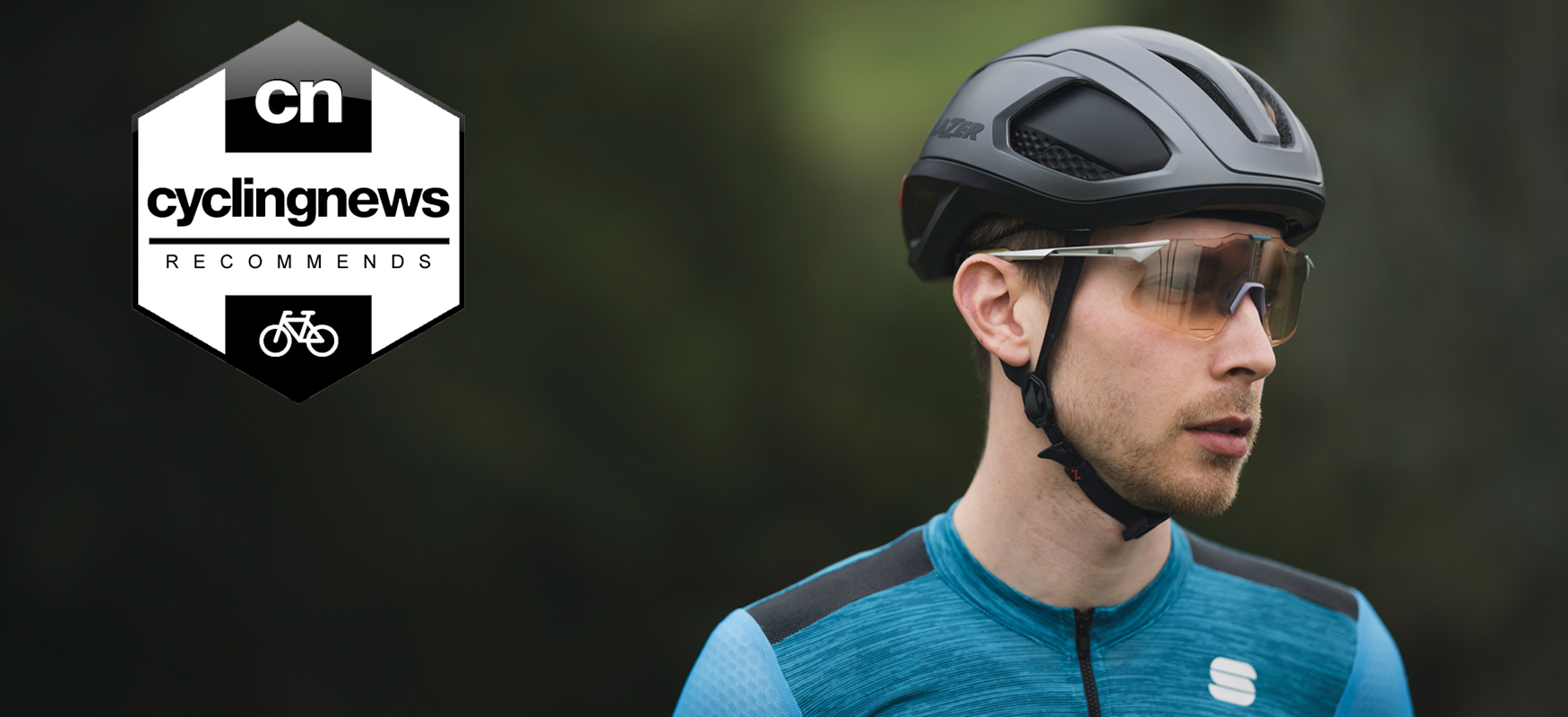Cyclingnews Verdict
A comfortable helmet with market-leading independently tested safety results, but there are a few minor drawbacks to consider
Pros
- +
Scrollsys works better than Rollsys
- +
Five-star independent safety results
- +
Integrated rear light dock
- +
Easy-to-clean matte finish
Cons
- -
Head cradle interferes with sunglasses
- -
Eyewear dock is wider than sunglasses, which bends them outwards
- -
Rear light angled slightly skywards
You can trust Cyclingnews
The Lazer Vento is an aero helmet designed in conjunction with Jumbo-Visma. It is among the first to be given Lazer's new KinetiCore technology, which uses strategically placed EPS foam blocks on the inside of the helmet interface, instead of a MIPS liner, in order to achieve rotational impact absorption.
It will replace the Lazer Bullet 2.0 as the best aero helmet in the Lazer line-up and, according to Lazer, the use of KinetiCore enabled it to create a helmet that is 2.3 per cent faster, 90g lighter, and better ventilated than its predecessor, all without a detriment to safety. In fact, it's already been awarded five stars in the independent helmet safety testing performed by Virginia Tech laboratory.
Lazer also claims that due to the exclusion of a third-party MIPS liner, KinetiCore is cheaper to produce but, in the case of the Vento, that cost-saving doesn't seem to have made its way to the consumer. Priced at £259.99 / $299.99 / €269.99, it's the most expensive helmet in the Lazer range.
How that stacks up against the best road bike helmets on the market depends on where you're shopping. In the UK market, it's at a similar price to the S-Works Evade II and the Met Trenta 3K Carbon. For anyone shopping in mainland Europe, the Met Trenta 3K MIPS is 50 Euros more at €320 and the S-Works Evade II is 10 Euros more than that. In the USA, the Lazer helmet is more expensive on average.
Given its design and price point, it's clearly aimed at road cyclists and racers who prioritise aerodynamics and don't mind a big-budget purchase. However, unlike other pure aero helmets such as the Abus Gamechanger and Kask Utopia, the Vento will appeal to those who also care about the helmet's safety performance, given the independently-awarded five-star result.
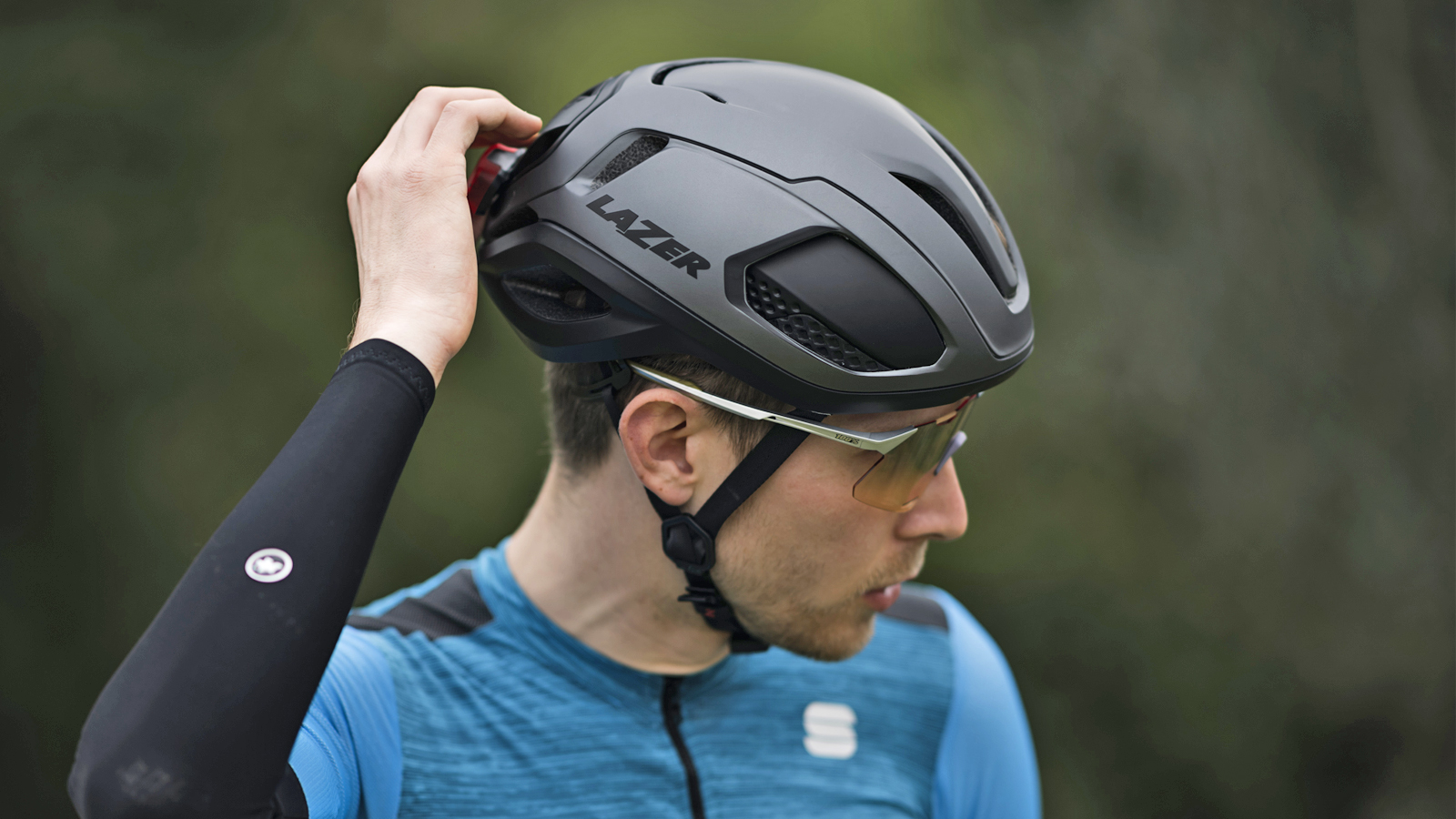
Design and specifications
On the subject design, the Vento has a typically aerodynamic side-on silhouette. At the front, two large central vents handle the majority of the air intake. These are joined by two smaller outer vents, which also double up as an eyewear dock for sunglasses, and six small indentations sit between the brow pad and the EPS foam to pull in a little more air. A central vent at the top is positioned to harness the Venturi effect, which reduces air pressure inside the helmet to accelerate the airflow and push warm air out more efficiently. Eight vents at the rear handle removal of said warm air.
At the centre at the rear, a small rectangular hole is positioned, into which a proprietary Lazer rear light can be fitted. Above this is a new type of retention system, called Scrollsys. This is Lazer's update to Rollsys, which features on the Bullet 2.0 and G1 helmets, among others. Instead of the small fiddly roller used on Rollsys, Scrollsys uses a large rubberised track that rolls between two rollers, not unlike the tracks on a tank. This is 15mm x 50mm in size and ridged for added grip, making it easy to operate even in gloved hands. It operates a cradle that wraps around the entire head, spreading the tension evenly. According to Lazer, its new position aft of the helmet has also improved aerodynamics.
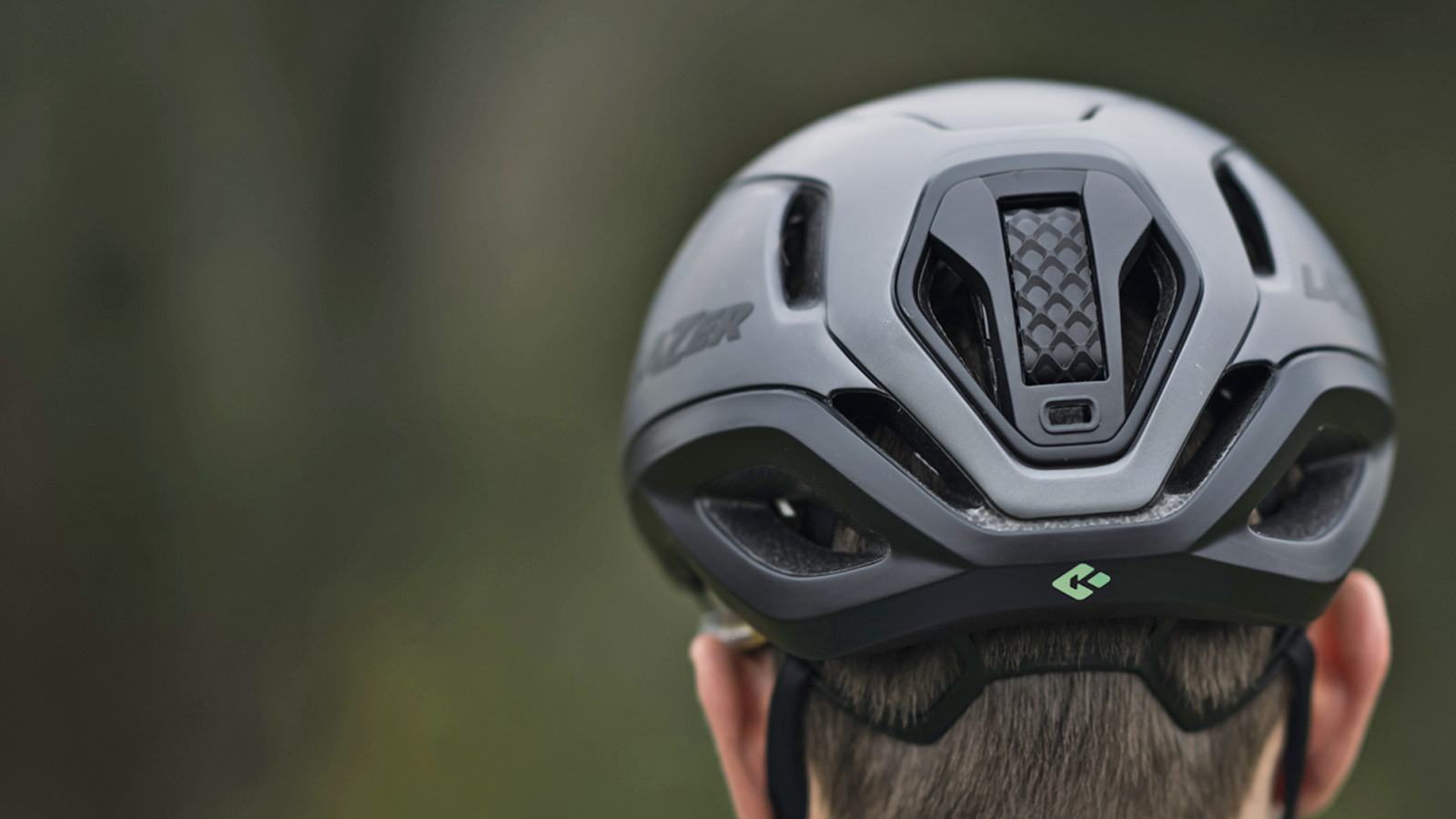
Where things get particularly interesting are on the inside of the helmet. Lazer has had a lot of success with MIPS liners in its helmets, but it has decided to step away from the Swedish company in favour of creating its own solution to the problem of rotational impacts.
It's called KinetiCore, and rather than adding a separate liner, it shapes the EPS construction of the helmet into strategically placed blocks on the inner face. These blocks are designed to deform and break in the event of a crash, reducing the G force on the head - and brain - within. It takes inspiration from the crumple zones that are built into cars.
I didn't test its performance by intentionally crashing my bike. Primarily because I prefer to keep my skin, but also because no two crashes are the same and the results would be inconclusive. Also, and more importantly, the highly controlled tests of Virginia Tech are a better metric by which to compare. In their tests, the Vento scores a five-star rating, the highest available.
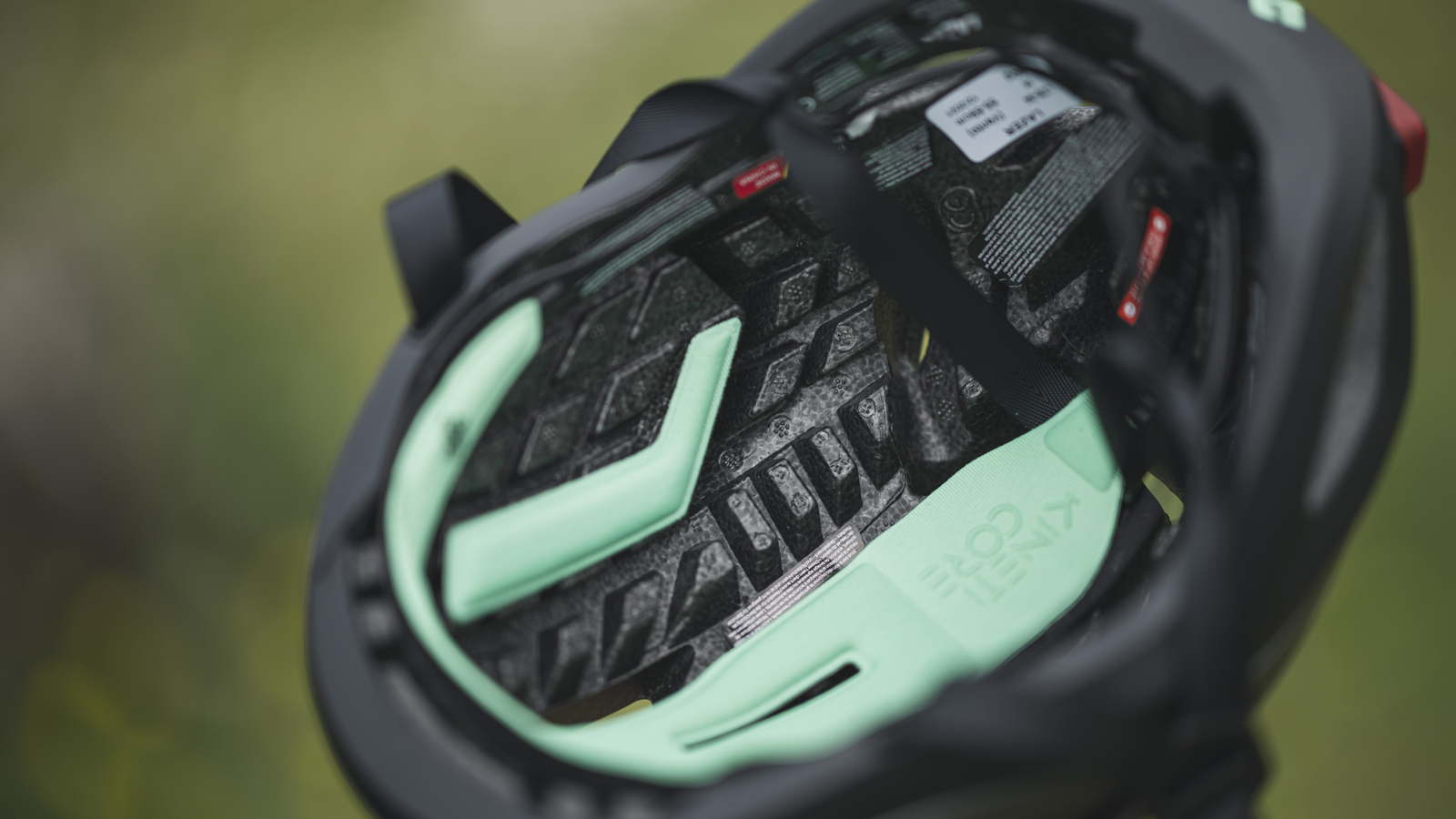
To give an idea of how tough the blocks are, I can compress them slightly with a press of the thumb, and I think if I really tried, I could snap one of the taller blocks clean off. Unsurprisingly, a sticker inside warns against doing this to your own helmet, as it's undoubtedly detrimental to the performance in a subsequent crash.
At the centre of the inside of the helmet, a small fabric loop is fixed into place, and through this, the rear strap is fed, allowing it to float left and right. This strap comes down laying flat against the head behind the ears. Meanwhile, the front straps connect to the underside of the helmet (rather than inside) at the temples, which means they come away from the face a little and sit more comfortably outside of the sunglass arms, which many cyclists will baulk at as a fashion faux pas. The dividers beneath the ears are adjustable, sitting flat and comfortably against the face.
Performance
At the time of writing, I've been using the Vento helmet for three weeks in an overcast Italy and a British mini-heatwave. My longest ride included 4.5 hours of riding and a lot of stopping for a wear time of around seven hours, so I feel I have a pretty good understanding of the helmet's ventilation, comfort and overall performance.
Throughout all rides, I've found the Vento to be immensely comfortable and well-fitting, without the large 'mushroom head' aesthetic that can often come with aero helmets. At 286g, it's lighter than its predecessor and in the same ballpark as its competitors.
Unsurprisingly, its ventilation doesn't compete with more airy helmets, but it's on par with other aero helmets I've tested. At no point during testing has sweat dropped onto my face or sunglasses, and only once - on a particularly steep, slow climb - did the warmth of my head enter my consciousness.
In my opinion, the new 'Scrollsys' retention system is better than the Rollsys system it replaces. I found Rollsys to be really fiddly, and at the point where the helmet started to tighten, I found the final couple of clicks to be met with too much resistance, and I couldn't get enough grip on the roller to easily achieve a nice secure fit. Thankfully, the larger surface area of Scrollsys overcomes this issue. Even so, despite Scrollsys being vastly improved, I still prefer the dials used by almost every other brand.
The cradle that Scrollsys operates surrounds the whole head, meaning pressure is distributed evenly and the helmet sits securely, and there are 10 vertical positions to make it sit comfortably at the rear. Despite the adjustability here, the rear cradle does push against the arms of every pair of sunglasses I have, in turn pushing them down the nose a little.
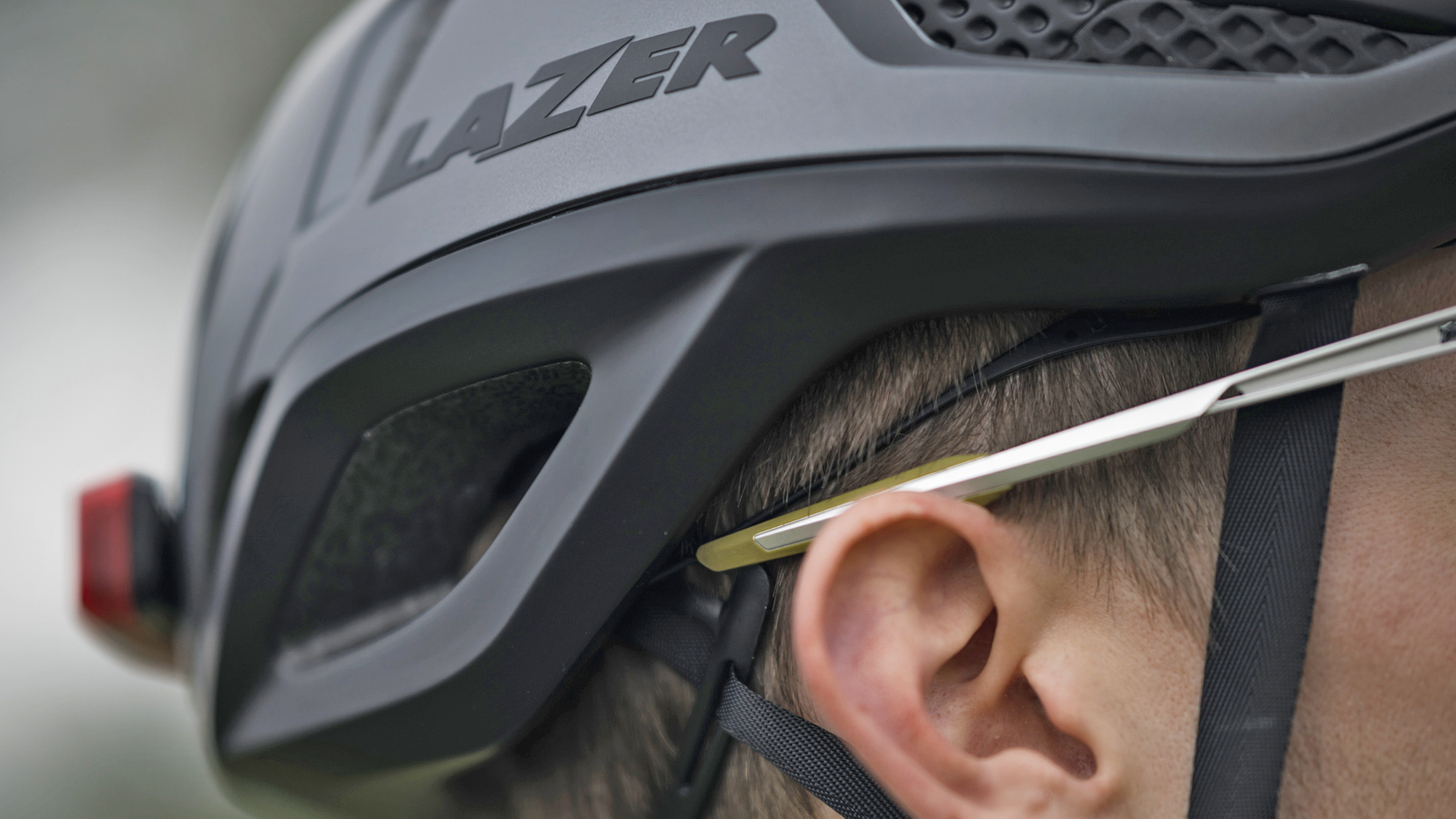
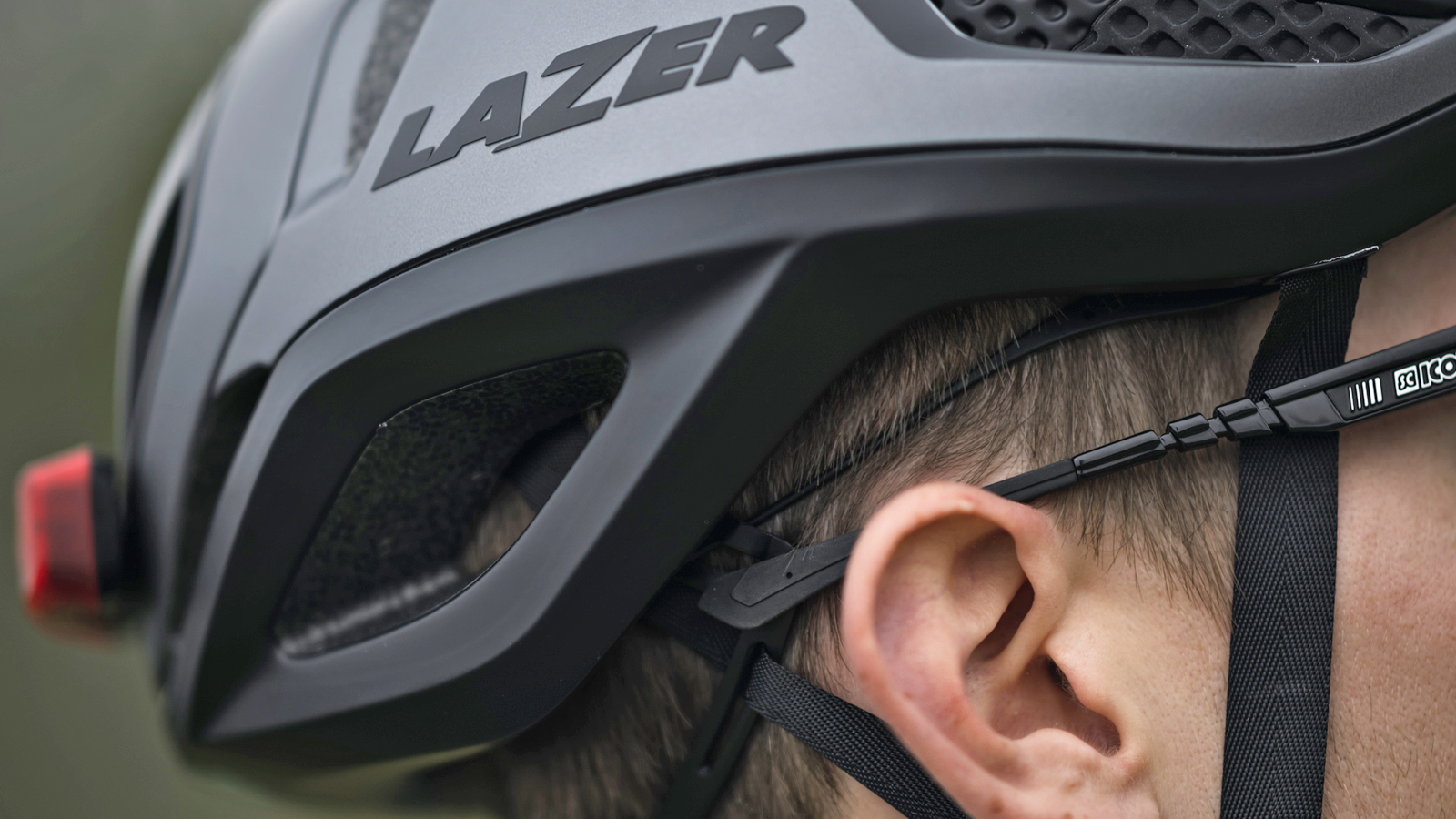
For a high-performance helmet, I deem an eyewear dock to be an absolute requirement. The good news here is that the Lazer Vento has one, including rubberised patches to aid grip, but it's worth noting that the two slots are quite wide apart. It's no major issue, and sunglasses do fit comfortably, but I wouldn't want to use it regularly with a stiff, small or brittle pair of sunglasses, as I feel it could bend them out of shape or snap them.
Finally, the rear light - which is an added extra - comes with a brightness of 40 Lumens. I like the neatly integrated consideration here from Lazer and the empty mount isn't unsightly when the light is removed. There are a couple of small issues here worth noting though. The first is that it uses a new magnetic charge cable, which is waterproof but not as convenient as something like a Micro-USB. The second is that the light is angled upward by around 20-degrees when the helmet is level, meaning aggressive riding pushes this further upwards. It's still visible, but slightly less bright than if it were positioned directly rearward.
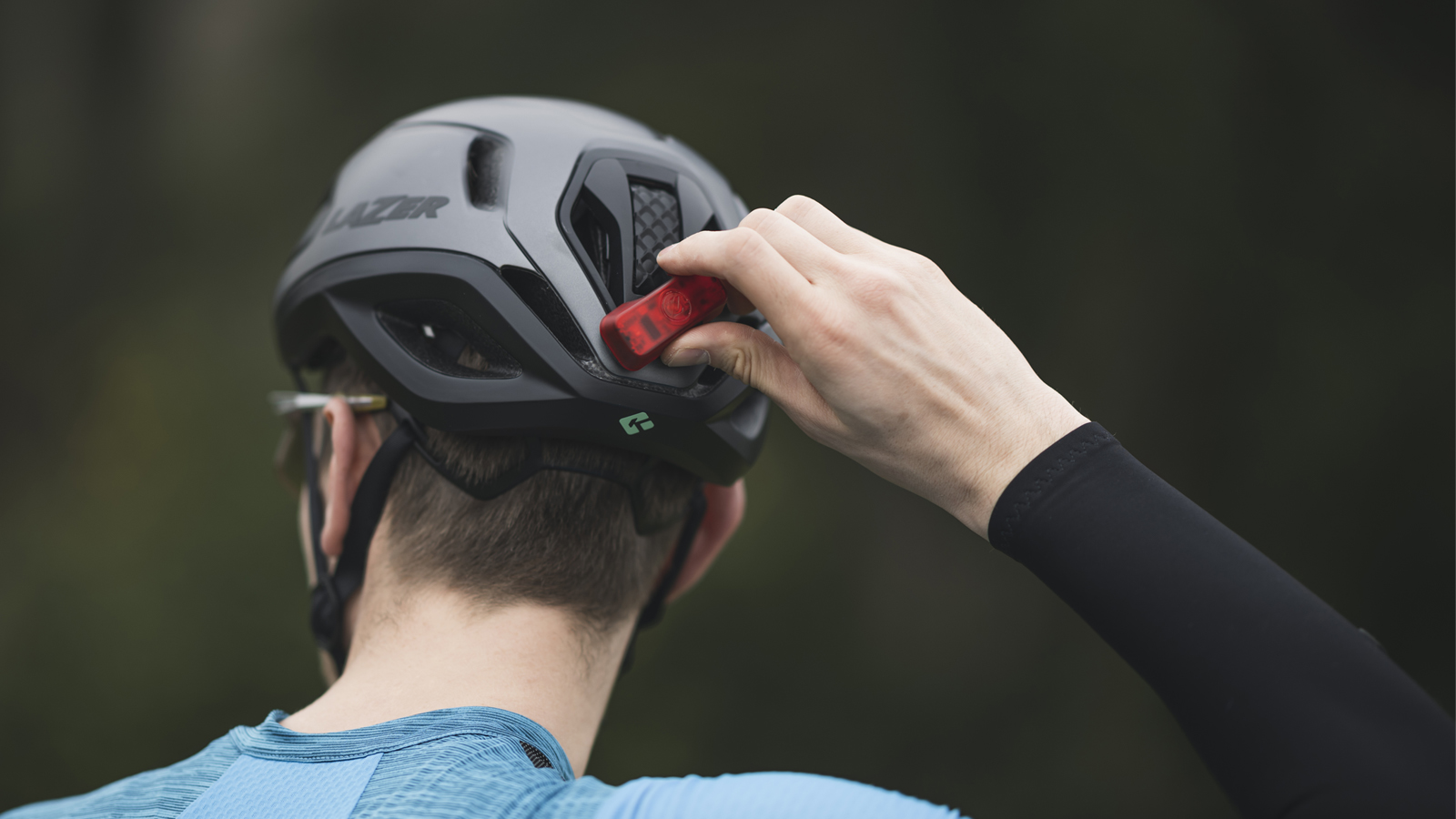
Verdict
The Lazer Vento isn't without a few small issues; the eyewear dock holes are too far apart, the rear cradle interferes with the arms on sunglasses and the rear light is angled skyward whenever you're in an aggressive riding position.
However, it's comfortable, widely adjustable, looks good and, if Lazer's claims are to be believed, it's also a little better for the environment than its predecessor thanks to the removal of the MIPS liner, less EPS foam in total and an improvement to its packaging. But most importantly, it does all that while providing its user with the added assurance of safety in the event of a crash.
Of course, no helmet will guarantee to prevent a concussion, but the ratings from independent tests are a sound metric by which to compare. I know a number of riders who've dealt with concussions and I've read countless more case studies, and I don't think I'll surprise anyone by saying that it's serious, scary and unpredictable. In my opinion, anything that reduces the chance of concussion - even by a fraction of a per cent - is worth considering.
At £259.99 / $299.99 / €269.99, there's no denying that the Lazer Vento is a premium investment, but in comparison to the competition it faces and the prices that they themselves are listed at, I would be happy to recommend the Vento.
Tech Specs: Lazer Vento aero helmet
- Price: £259.99 / $299.99 / €269.99
- Weight: 286g (actual, medium)
- Rotational safety: KinetiCore
- Virginia Tech rating: 5/5
- Retention: Scrollsys with 10-position height adjust
- Sizes: 2 ( S-M and L)
- Colours: Dependent on country: Matte Black, White, Matte Dark Green, Black & Silver, Matte Blue & Grey, Red, Matte Titanium, Black & Flash Yellow

Josh is Associate Editor of Cyclingnews – leading our content on the best bikes, kit and the latest breaking tech stories from the pro peloton. He has been with us since the summer of 2019 and throughout that time he's covered everything from buyer's guides and deals to the latest tech news and reviews.
On the bike, Josh has been riding and racing for over 15 years. He started out racing cross country in his teens back when 26-inch wheels and triple chainsets were still mainstream, but he found favour in road racing in his early 20s, racing at a local and national level for Somerset-based Team Tor 2000. These days he rides indoors for convenience and fitness, and outdoors for fun on road, gravel, 'cross and cross-country bikes, the latter usually with his two dogs in tow.
